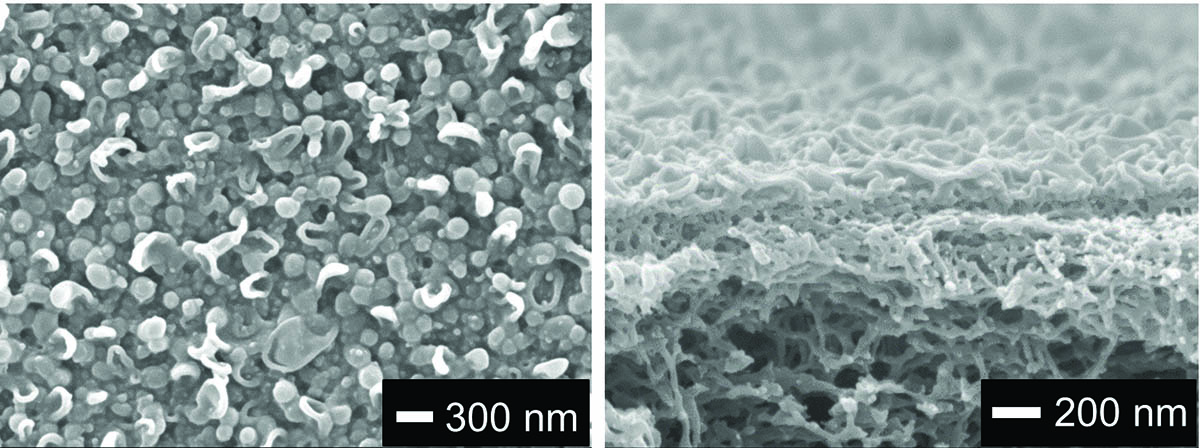Nature’s inspiration for filtering seawater
Membranes with water channels produce more freshwater from seawater than commercial options.

Scanning electron microscopy images outlining the top view (left) and side view (right) of a desalination membrane embedded with biomimetic water channels. Credit: NTU.
Water rapidly moves in and out of cells through transmembrane channel proteins called aquaporins. Utilising this concept from nature, scientists have developed seawater desalination membranes integrating synthetic versions of these channels that improve the filtration of seawater to produce freshwater.
In the past decade, researchers have taken this approach to make biomimetic membranes that contain synthetic water channels held by biomolecular structures called liposomes. However, the preparation process is time consuming and the membranes created do not show adequate performance for seawater desalination.
NTU researchers, led by Prof Wang Rong from the School of Civil and Environmental Engineering, addressed these challenges by directly integrating biomimetic channels into parts of the desalination membrane.
Results from their studies showed that the rate of water permeation through the membrane was 28% higher for the biomimetic membrane than a commercial option while removing the same amount (99.5%) of salt.
Simulations also showed that using this new biomimetic filter could decrease the total required membrane area by 25%. In addition, for the same membrane area, the biomimetic membrane could reduce the energy consumption of desalination by 7.2% compared to commercial methods.
---
Read about the study “A scalable method to fabricate high-performance biomimetic membranes for seawater desalination: Incorporating pillar[5]arene water nanochannels into the polyamide selective layer” in Journal of Membrane Science (2022), DOI: 10.1016/j.memsci.2022.120957.
The article appeared first in NTU's research & innovation magazine Pushing Frontiers (issue #22, August 2023).





.tmb-listing.jpg?Culture=en&sfvrsn=9b7345be_1)
.tmb-listing.jpg?Culture=en&sfvrsn=57e7d9a3_1)
.tmb-listing.jpg?Culture=en&sfvrsn=462ec612_1)